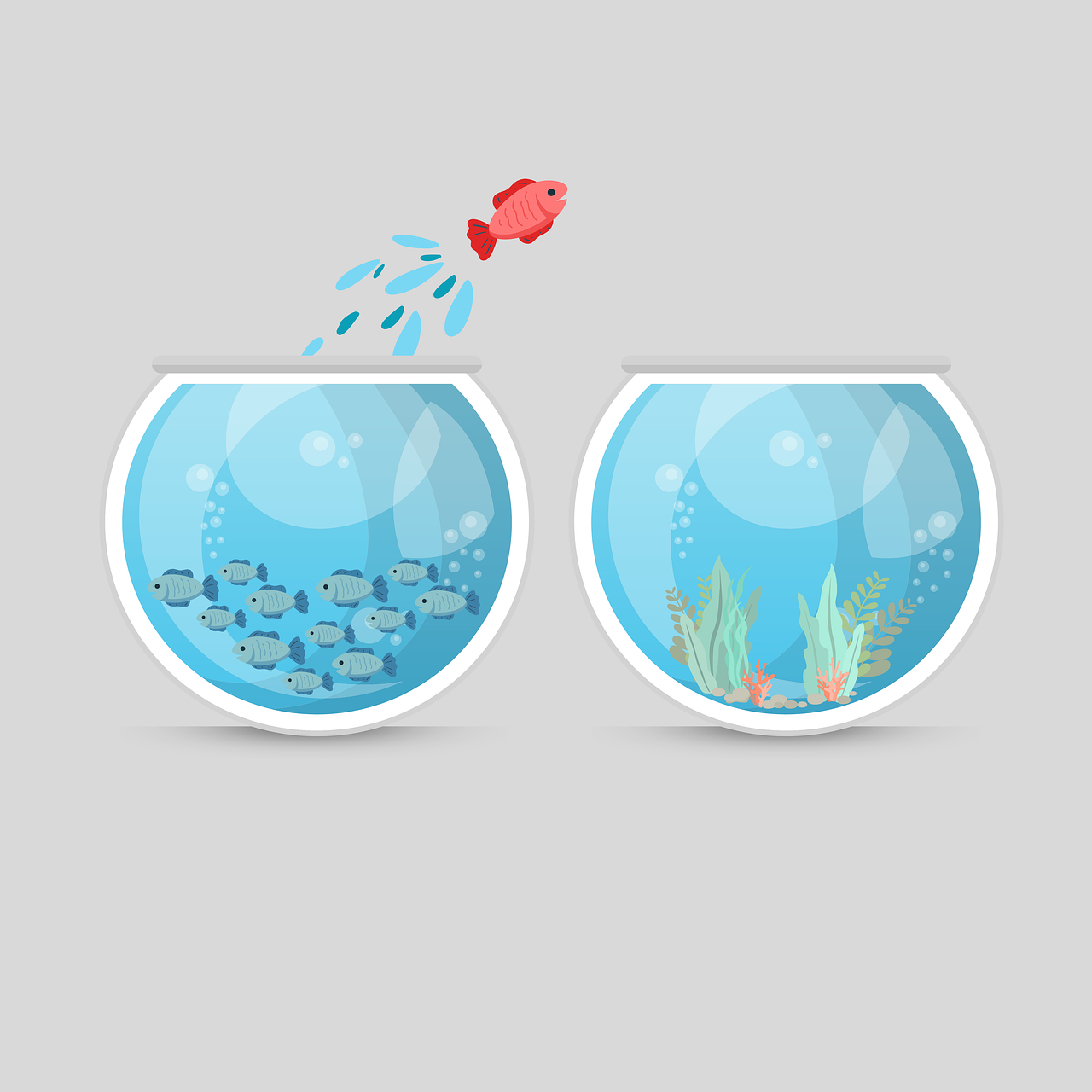In the bustling arena of startups frying for consumer attention, standing out is not a mere advantage—it’s a necessity. The current U.S. business landscape exemplifies this fierce competition, with approximately 250,000 new business applications each month. This intense influx creates both challenges and opportunities for emerging companies. To thrive, startups must go beyond offering products or services; they need to master Brand Positioning, harness Differentiation, and articulate a compelling Unique Value Proposition. Customer-Centricity emerges as a pivotal strategy, where authentic Brand Storytelling and Disruptive Branding techniques attract and retain loyal customers. In 2025, the dynamic marketplace demands that startups not only innovate but also craft Niche Targeting strategies to carve out exclusive spaces. The essence of authenticity, combined with scalability potential, shapes which startups will survive and lead in this competitive environment. This exploration unveils how startups can transform the chaos of competition into a realm of significant opportunity and sustainable growth.
Mastering Brand Positioning and Differentiation to Thrive in Competitive Startup Markets
Within saturated industries, brand positioning and differentiation are crucial tools for startups aiming to break through the noise and attract attention. Brand positioning defines the unique place a company occupies in the minds of its customers, a strategic identity that distinguishes it from competitors. Differentiation complements this by emphasizing unique features or experiences a startup delivers that others do not. These conceptions jointly shape perception and preference, anchoring a startup’s market relevance.
Many startups mistakenly focus solely on product features, neglecting the nuanced art of positioning. An effective brand position transcends products; it communicates why customers should care. For instance, consider a hypothetical fintech startup specializing in micro-investments that brands itself not only as technologic but as a catalyst for financial empowerment among underserved demographics. This positioning highlights societal impact, distinguishing it in a crowded financial services field.
Strategies for impactful brand positioning and differentiation include:
- Deep competitor analysis: Go beyond surface-level understanding. Consuming competitors’ newsletters, trying their products, and studying their marketing tactics reveal gaps and opportunities.
- Blue Ocean Strategy: Instead of competing head-to-head, seek untapped market spaces. Create new demand rather than fight over existing customers.
- Clear articulation of Unique Value Proposition (UVP): Define precisely what makes your offering compelling and indispensable.
- Consistent messaging: Ensure all communication channels reflect your brand’s personality, fostering trust and recognition.
Consider a startup launching an eco-friendly packaging solution. While competitors may highlight biodegradability, this startup could differentiate by focusing its brand positioning on customization and aesthetic design, appealing to boutique businesses valuing brand aesthetics as much as sustainability.
| Factor | Importance | Example Approach |
|---|---|---|
| Brand Positioning | High | Aligning with customer values, such as sustainability or empowerment. |
| Differentiation | High | Offering unique product features or services, e.g., personalization. |
| UVP Clarity | Essential | Communicating the unique benefit effectively to customers. |
In 2025’s volatile markets, ongoing refinement of brand positioning enables startups to stay relevant as customer preferences and competitive landscapes shift. This adaptability—rooted in deep understanding of competitive dynamics and customer needs—translates into sustained success in the startup arena.

Leveraging Customer-Centricity and Authentic Brand Storytelling to Build Loyal Communities
In the age where AI-generated content is omnipresent and marketing noise saturates every channel, Customer-Centricity and Authenticity in Brand Storytelling have proven to be powerful differentiators. Building a startup that customers feel emotionally connected to can transform transactional relationships into loyal communities.
Customer-Centricity means putting the customer’s perspective and needs at the heart of every decision and interaction. This strategy requires actively listening to feedback and adapting offerings accordingly. For example, a health-tech startup selling wearable devices might incorporate real user stories and health journeys into their marketing efforts. This move cultivates empathy and trust, enhancing brand loyalty.
Authentic Brand Storytelling takes this further by transparently sharing the startup’s journey, mission, and values—inviting customers into the company’s world. This openness boosts engagement and community, as consumers no longer just buy a product but become part of a shared narrative.
Key tactics to implement include:
- Transparency in processes: Showcase behind-the-scenes insights, from sourcing materials to team values.
- Engaging content creation: Develop stories around customer success, challenges overcome, or mission impact.
- Active community engagement: Respond promptly on social media and form interactive platforms where customers can share and connect.
One illustrative example is a startup in sustainable fashion that invites customers to participate in design decisions or recycling programs, turning consumers into stakeholders in the brand’s mission. This humanizes the startup amid a sea of generic competitors and fosters advocacy that purely transactional models lack.
| Customer-Centricity Practice | Benefit | Example Startup Actions |
|---|---|---|
| Listening & Feedback Loops | Improved product-market fit | Surveys, beta testing with real users |
| Storytelling Transparency | Stronger emotional connection | Sharing founder stories, sustainability efforts |
| Community Building | Increased brand loyalty & word of mouth | Online forums, social media engagement |
Ultimately, startups that master these elements elevate their market presence by forging meaningful relationships, one genuine interaction at a time. This approach reduces customer churn and amplifies brand evangelism — invaluable assets for long-term growth.
Innovation and Disruptive Branding as Keys to Creating Blue Oceans
The philosophy of being not just better but different is embodied in innovation and Disruptive Branding. These strategies invite startups to rethink traditional models and create uncontested market spaces, known as Blue Oceans. In 2025, this tactic is instrumental for those who wish to escape cutthroat competition and define new industry standards.
Innovation can be product-based, service-oriented, or even procedural. For example, a startup in the renewable energy sector might innovate by offering pay-as-you-go solar installations, addressing affordability and accessibility issues often ignored by established players.
Disruptive Branding complements this by boldly challenging market norms through advertising, pricing models, and customer experiences. It is about crafting a brand image that shocks or surprises, compelling attention and preference.
To integrate Innovation and Disruptive Branding, startups should:
- Identify unmet customer needs: Use analytics and direct feedback to find friction points in existing markets.
- Experiment with novel business models: Trial subscription services, freemium offers, or decentralized platforms.
- Craft bold marketing campaigns: Utilize storytelling that shakes industry assumptions.
Consider a food tech startup that disrupts traditional grocery shopping by using AI-driven meal planning coupled with hyper-local ingredient delivery. Their innovative offering together with disruptive branding attracts customers looking for convenience fused with sustainability.
| Innovation Type | Market Impact | Example |
|---|---|---|
| Product Innovation | New solutions that solve existing problems | Pay-as-you-go solar panels |
| Service Innovation | Enhances customer experience | AI-powered meal planning and delivery |
| Business Model Innovation | Changes how value is delivered | Freemium and subscription models |

Effective Niche Targeting and Scalability Strategies for Sustainable Growth
Niche Targeting is a strategic approach where startups focus on specific market segments underserved or ignored by larger competitors. This tactic enhances a startup’s ability to cater deeply to unique customer needs and build strong loyalty. In 2025, startups using precise niche targeting often find fertile ground for rapid initial adoption and long-term retention.
However, the success of niche targeting relies heavily on scalability—the capacity to grow operations without losing quality or customer intimacy. Scalability ensures that once a niche market is captured, the business can expand its reach or product line sustainably.
To succeed in combining niche targeting and scalability, startups should consider:
- Precise market research: Identify demographic, psychographic, and behavioral characteristics of the niche.
- Tailored product or service features: Customize offerings to fit niche needs perfectly.
- Modular business models: Design operations that support gradual scale without operational collapse.
- Automation and technology: Leverage tech solutions to maintain efficiency as demand grows.
An apparel startup focusing on adaptive clothing for people with disabilities exemplifies niche targeting, meeting specialized demands often overlooked. By building digital platforms for direct customer feedback and automated manufacturing, they maintain quality while scaling regionally and internationally.
| Strategy | Purpose | Implementation Tips |
|---|---|---|
| Niche Targeting | Focus on underserved customer groups | Segment analysis, community engagement |
| Scalability | Support growth without quality loss | Automation, modular processes |
| Customer-Centricity | Enhance loyalty within niche | Personalization, responsive feedback loops |
Startup Strategies Comparison
For startups, balancing niche focus while preparing to scale is a nuanced challenge. Yet, successful navigation creates robust businesses capable of adapting and thriving beyond initial markets.
Overcoming Common Pitfalls: Prioritization, Continuous Innovation, and Competitive Awareness
The startup journey is riddled with potholes—common pitfalls that can derail even the most promising ventures. Among the most prevalent are lack of focus, complacency in innovation, and underestimating competition.
First, prioritization is critical. Startups that attempt to do too many things simultaneously risk dilution of resources and messaging. Focusing on the critical few initiatives that define the Unique Value Proposition allows clearer Brand Positioning and more effective marketing.
Second, embracing continuous Innovation is non-negotiable in 2025’s fast-evolving markets. The mindset must be one of perpetual adaptation—pivoting swiftly when confronted with new insights or competitor moves. This requires a culture encouraging experimentation and calculated risk-taking.
Lastly, awareness and respect for competition are vital. Pride or arrogance can blind startups to better offerings or smarter tactics deployed by rivals. Continuous competitive intelligence helps identify gaps and insights for strategic improvement.
- Keep focused on core differentiators: Avoid distractions that do not directly enhance your Unique Value Proposition.
- Establish innovation routines: Schedule regular brainstorming, pilot programs, and customer feedback reviews.
- Monitor competitors closely: Subscribe to industry reports and interact anonymously with competing products and customers.
- Acknowledge and learn from competition: Celebrate competitor successes as learning opportunities.
| Pitfall | Impact | Solution |
|---|---|---|
| Trying to do too many things | Resource dilution, loss of focus | Clear prioritization |
| Neglecting innovation | Market irrelevance, decline | Continuous adaptation |
| Underestimating competition | Strategic blind spots | Regular competitive intelligence |
Recognizing and systematically addressing these challenges empowers startups to harness competitive chaos, turning potential barriers into unique opportunities—echoing the wisdom that “amid chaos, there is also opportunity.”
What makes a startup truly thrive in saturated markets?
Understanding how to position a startup, appeal genuinely to customers, innovate disruptively, target niche markets, and prioritize effectively are non-negotiable pillars of success. Every strategy revolves around creating authentic connections and delivering scalable innovations uniquely attuned to specific market needs.
How important is brand storytelling in startup success?
Authentic brand storytelling fosters emotional bonds that turn customers into advocates, reducing churn and boosting long-term loyalty. It humanizes the startup and distinguishes it beyond price and features.
Can niche targeting limit future growth?
While niche targeting focuses resources and fosters loyalty, it can constrain market size. Strategic scalability planning is essential to expand offerings or parallel niches without losing focus or authenticity.
How can startups keep ahead of competition?
Continuous competitor analysis, coupled with a commitment to innovation and flexibility, allows startups to anticipate changes and swiftly capitalize on emerging trends or gaps.
What role does customer feedback play in differentiation?
Customer feedback is invaluable for refining Unique Value Propositions and enhancing Customer-Centricity. It helps identify unmet needs and creates opportunities for innovation that solidify market differentiation.


